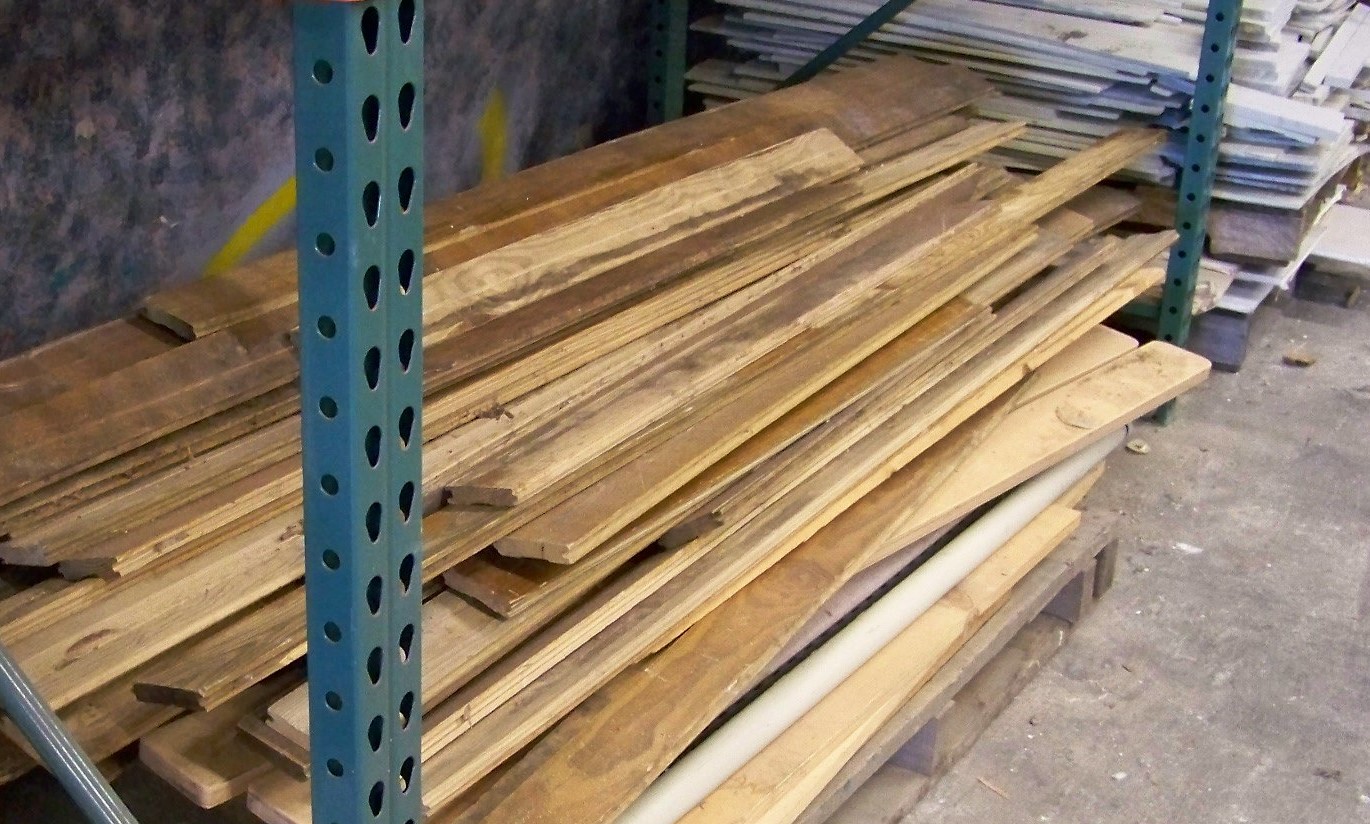Tongue and groove joint
Contents |
[edit] Introduction
An edge-to-edge, tongue and groove joint (also referred to as T&G, tongue & groove, tongue-in-groove or tongued and grooved) is a carpentry term used to describe materials that join together in a specific manner described below.
[edit] Joining technique
The locking mechanism is made with a tongue (male) ridge projection on one edge and a matching groove (female) slot recession on the other edge. The tongue of one piece fits into the groove of the corresponding piece to form a strong, flush joint that may be glued in place if a permanent joint is required.
There are also loose tongue and groove joints. This technique is used on materials that are given grooves on facing edges and joined with a separate (or loose) piece of material that fits between the two and locks them together. Again, glue is often used to secure the joint.
Tongue and groove joints are variations on the mortise and tenon joint, but instead of joining two pieces at a right angle (like a mortise and tenon joint), the tongue and groove connection creates a strong, smooth parallel joint.
[edit] Common applications
This traditional fitting method is often used on natural materials (such as timber or cork), but it can also apply to artificial materials (such as plastic, vinyl or engineered timber). It was once commonly used for flooring and furniture joinery, but other methods have now become widely used.
Tongue and groove treatments can also be used on interior walls such as floor to ceiling timber panels, moulding or wainscoting. Wainscoting is a type of wall panel that is both functional and decorative. It was historically made from timber, but it is now available in other materials. Wainscoting is typically found on the lower portion of an interior wall.
It can also be used as cladding on a building’s exterior surface. The term 'cladding' refers to components that are attached to the primary structure of a building to form non-structural, external surfaces. This is as opposed to buildings in which the external surfaces are formed by structural elements, such as masonry walls, or applied surfaces such as render.
The tongue and groove connection method is the basic concept behind Tongue Larssen interlocking sheets of metal used to create protective retaining walls. These sheet piles can have beneficial driving qualities and provide a strong, close-fitting joint to form an effective water seal because of their uniform section shape. Tongue Larssen sheet piles can be used for water control purposes, such as coastal protection, tide control, flood barriers and so on.
[edit] Advantages and disadvantages
In addition to their smooth appearance and strong bond, tongue and groove joints can be fairly easy to fabricate and instal without causing damage to the edges when they are fitted together. For flooring installations, the tongue and groove technique is suitable for floating floors and is commonly incorporated into click and lock flooring installations. However, unlike basic tongue and groove flooring, click lock flooring joins at the interlocking edge and then gets snapped into place through the application of firm, downward pressure.
In any type of installation, tongue and groove joints can be difficult to disassemble or repair once the glue has set between the panels.
[edit] Related articles on Designing Buildings
Featured articles and news
Homes England supports Greencore Homes
42 new build affordable sustainable homes in Oxfordshire.
Zero carbon social housing: unlocking brownfield potential
Seven ZEDpod strategies for brownfield housing success.
CIOB report; a blueprint for SDGs and the built environment
Pairing the Sustainable Development Goals with projects.
Types, tests, standards and fires relating to external cladding
Brief descriptions with an extensive list of fires for review.
Latest Build UK Building Safety Regime explainer published
Key elements in one short, now updated document.
UKGBC launch the UK Climate Resilience Roadmap
First guidance of its kind on direct climate impacts for the built environment and how it can adapt.
CLC Health, Safety and Wellbeing Strategy 2025
Launched by the Minister for Industry to look at fatalities on site, improving mental health and other issues.
One of the most impressive Victorian architects. Book review.
Common Assessment Standard now with building safety
New CAS update now includes mandatory building safety questions.
RTPI leader to become new CIOB Chief Executive Officer
Dr Victoria Hills MRTPI, FICE to take over after Caroline Gumble’s departure.
Social and affordable housing, a long term plan for delivery
The “Delivering a Decade of Renewal for Social and Affordable Housing” strategy sets out future path.
A change to adoptive architecture
Effects of global weather warming on architectural detailing, material choice and human interaction.
The proposed publicly owned and backed subsidiary of Homes England, to facilitate new homes.
How big is the problem and what can we do to mitigate the effects?
Overheating guidance and tools for building designers
A number of cool guides to help with the heat.
The UK's Modern Industrial Strategy: A 10 year plan
Previous consultation criticism, current key elements and general support with some persisting reservations.
Building Safety Regulator reforms
New roles, new staff and a new fast track service pave the way for a single construction regulator.























